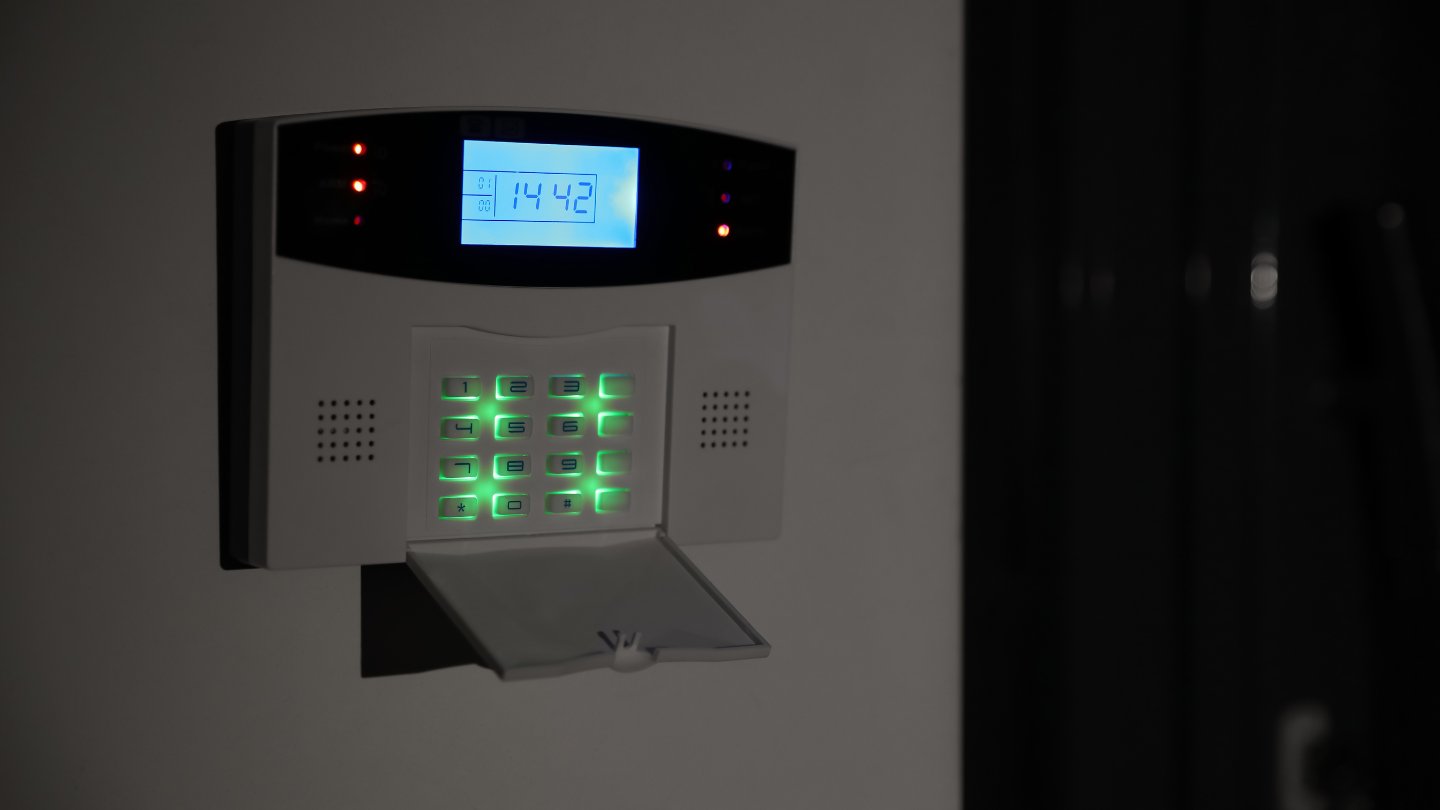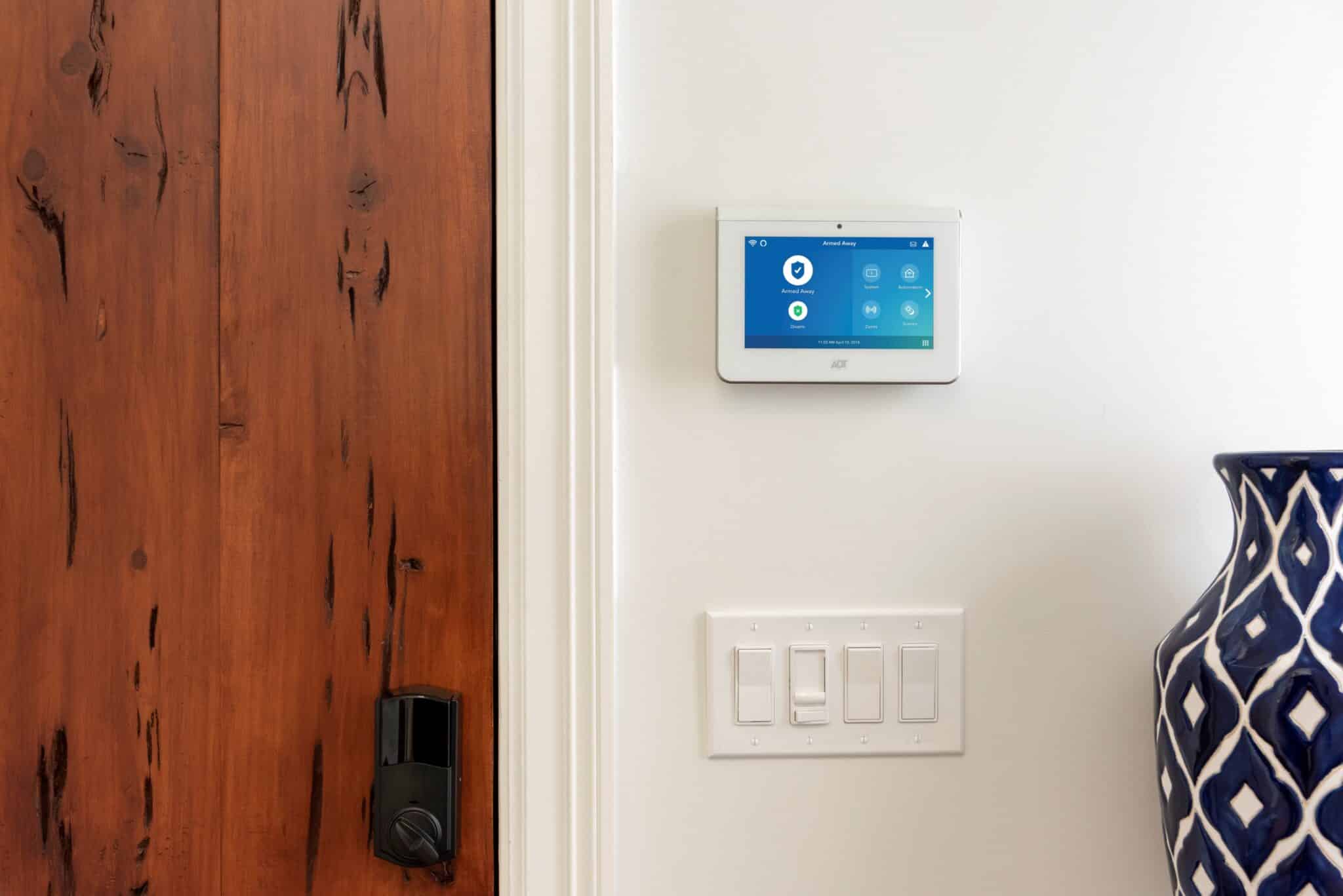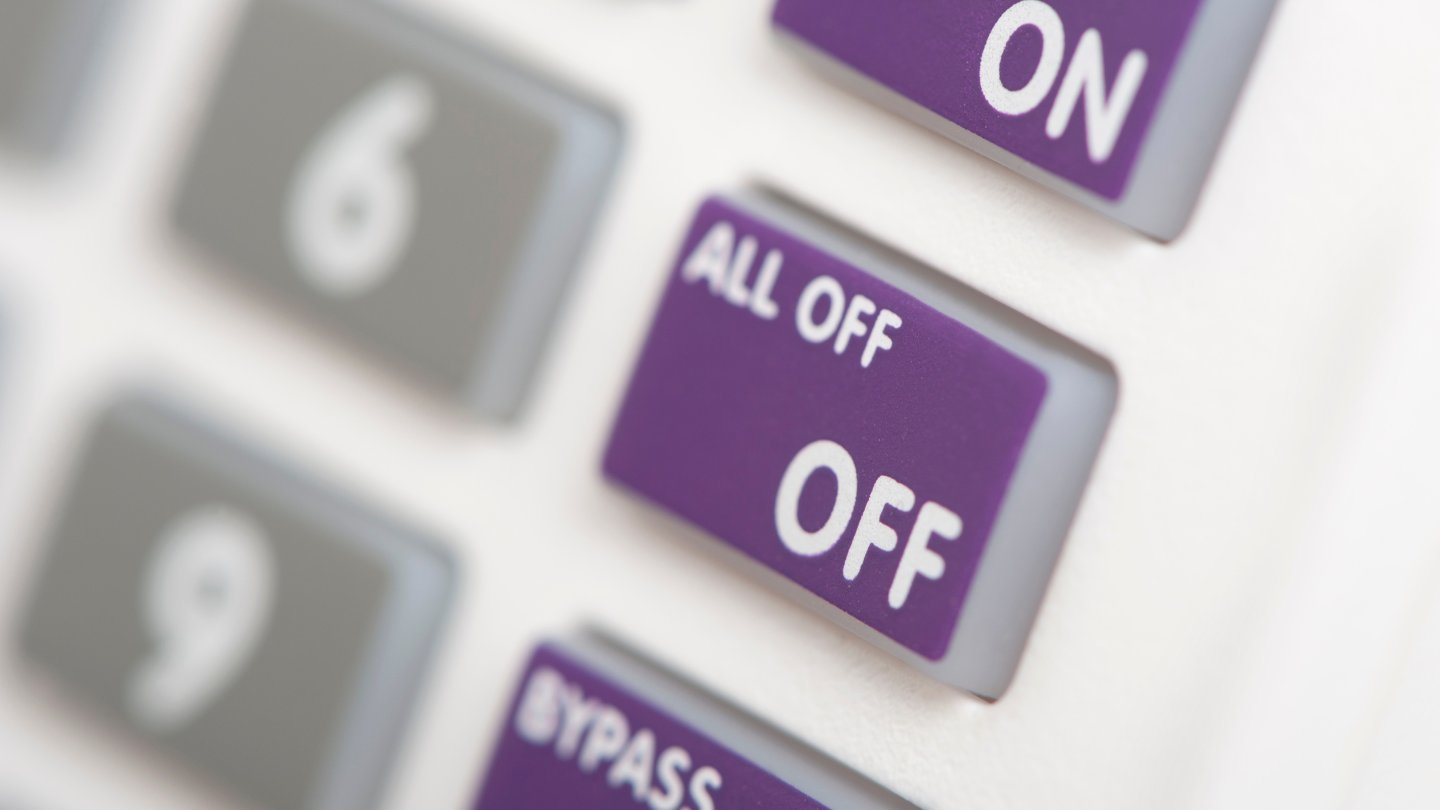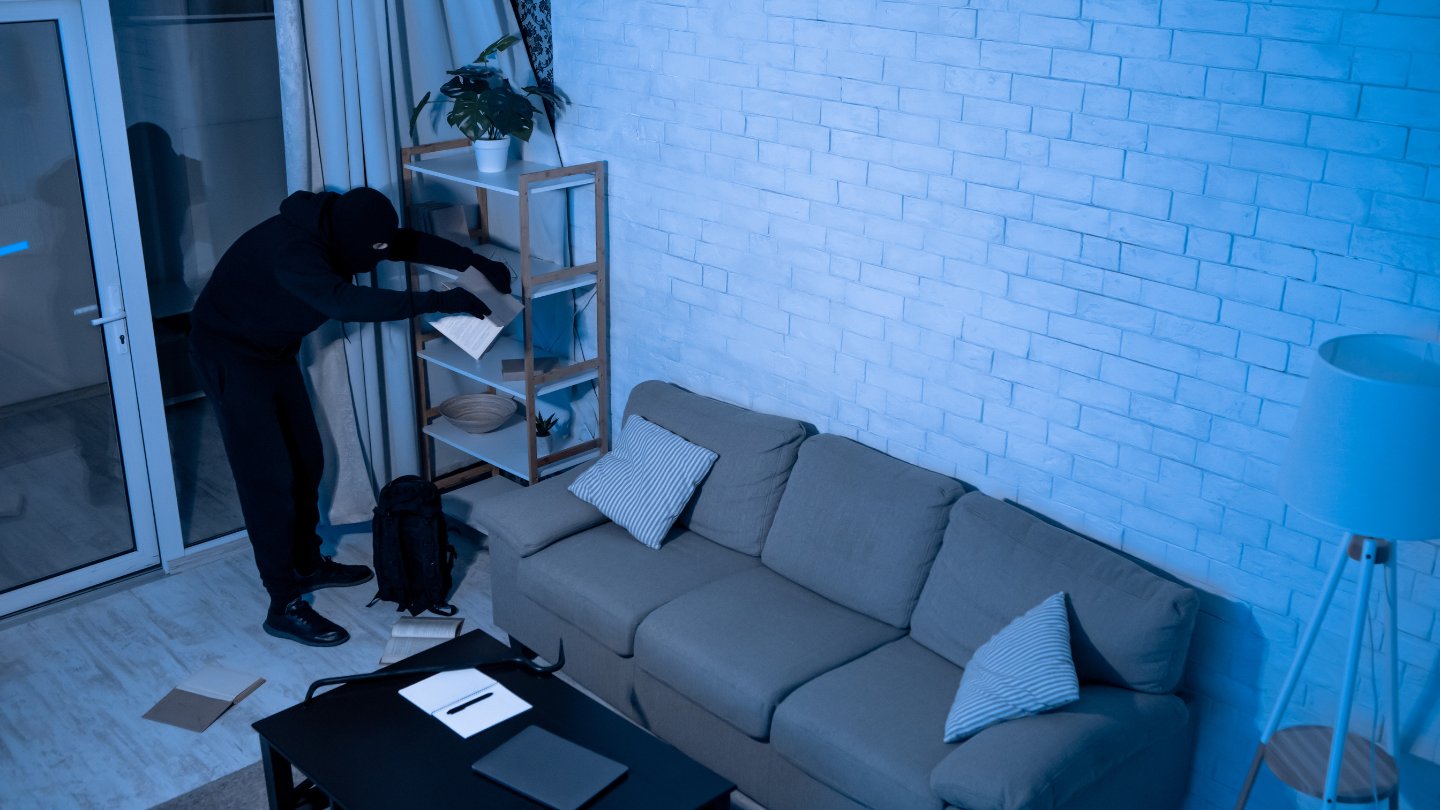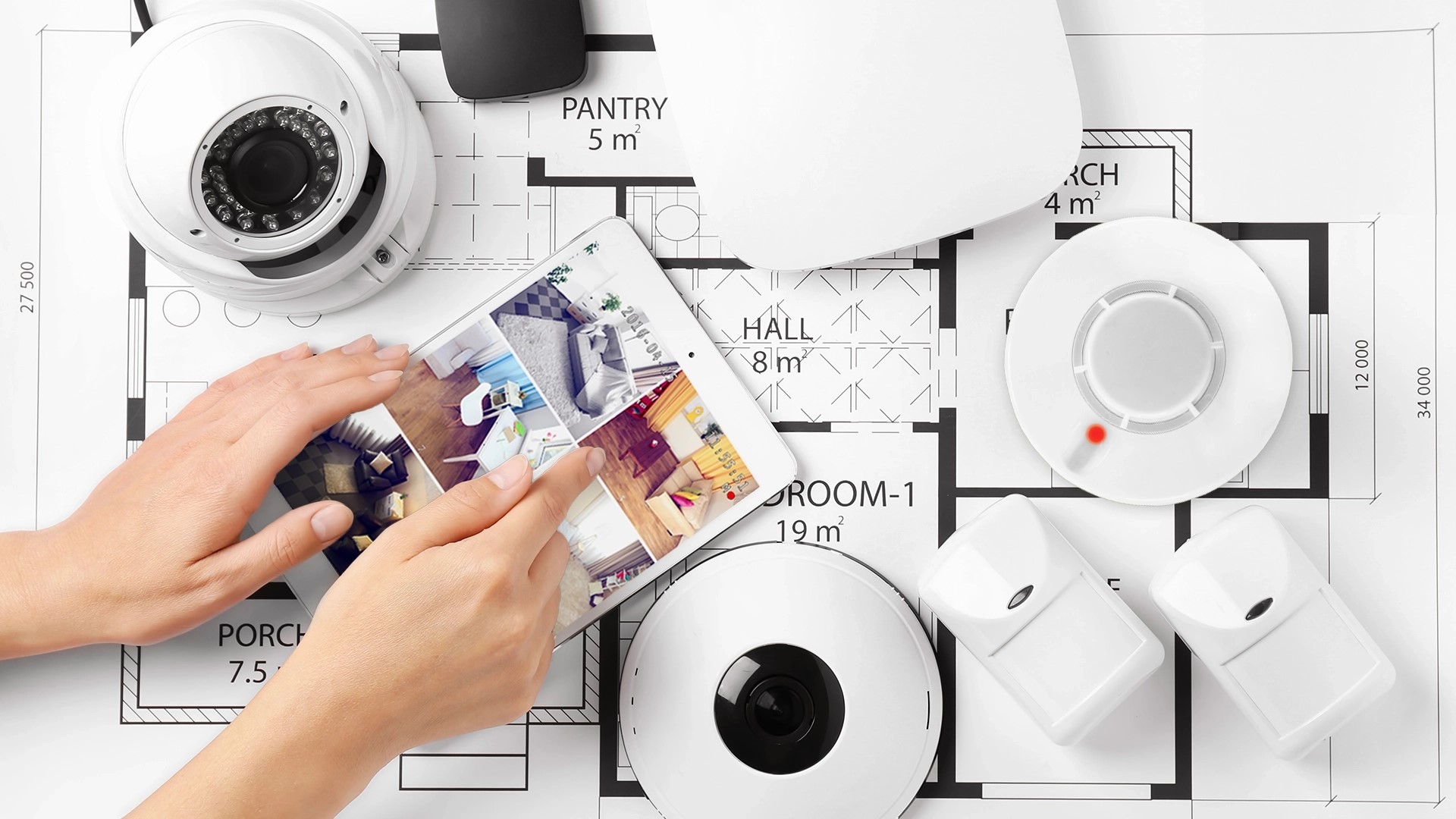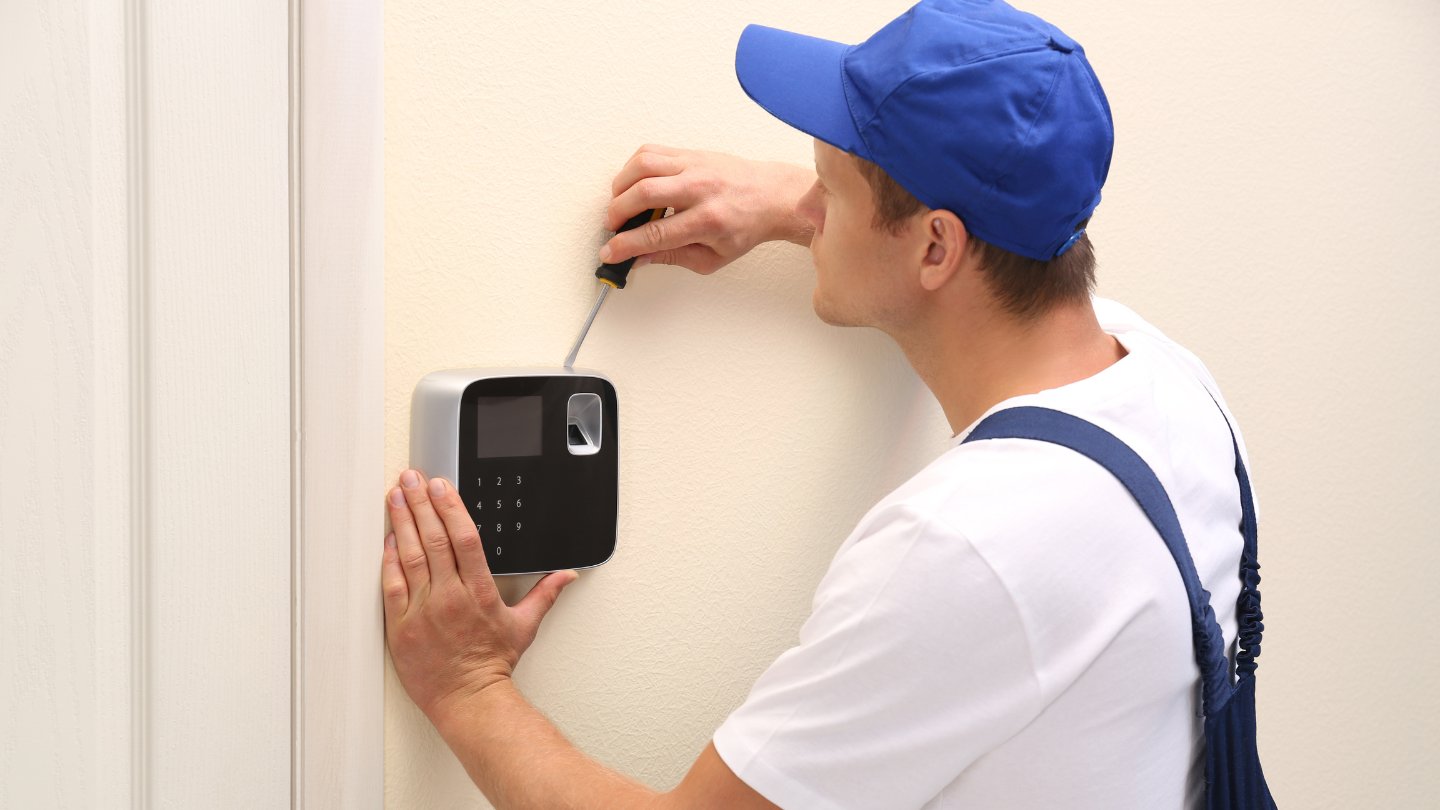Home>Home Security and Surveillance>What To Do When A Tenant Puts A Burglar Alarm On An Apartment


Home Security and Surveillance
What To Do When A Tenant Puts A Burglar Alarm On An Apartment
Modified: August 17, 2024
Learn how to handle a tenant putting a burglar alarm on your apartment. Find expert advice on home security and surveillance.
(Many of the links in this article redirect to a specific reviewed product. Your purchase of these products through affiliate links helps to generate commission for Storables.com, at no extra cost. Learn more)
Introduction
Home security and surveillance have become increasingly important in today’s society. With the rise in crime rates and incidents of break-ins, it is crucial for homeowners and tenants to take proactive measures to protect their properties and ensure their safety. One effective way to enhance security is by installing a burglar alarm system.
In the context of renting an apartment, tenants may feel the need to install a burglar alarm for added peace of mind and protection of their personal belongings. However, this can raise questions about the tenant’s rights and the impact of the alarm on other residents within the building.
This article aims to provide guidance on what to do when a tenant puts a burglar alarm on an apartment and how to handle the situation professionally and effectively. We will explore the tenant’s right to install a burglar alarm, evaluate the impact on other tenants, discuss communication strategies, review lease agreements, consider legal advice, and suggest actions for resolving the issue amicably.
It is essential to approach the situation with empathy and understanding, taking into account the concerns of both the tenant and other residents. Working together, it is possible to find a compromise that balances security needs while maintaining a peaceful living environment.
Understanding the rights and obligations of both the tenant and landlord is essential when addressing the installation of a burglar alarm in a rented apartment. By approaching the issue with open communication and a willingness to find a mutually satisfactory solution, it is possible to create a safe and comfortable living environment for all parties involved.
Key Takeaways:
- Installing a burglar alarm in a rented apartment? Understand your rights, communicate openly, and seek compromise to maintain a secure and harmonious living environment for all residents.
- When conflicts arise, seek legal advice and involve local authorities as a last resort. Resolve issues amicably through open dialogue, mediation, and compromise.
Read more: What To Do If A Burglar Alarm Goes Off
Understanding the Tenant’s Right to Install a Burglar Alarm
As a tenant, it is important to understand your rights when it comes to installing a burglar alarm in your rented apartment. Generally, tenants have the right to install security measures that provide added protection for themselves and their personal property.
The first step is to review your lease agreement. Some lease agreements may have specific clauses regarding the installation of security systems. It is crucial to understand these clauses and any restrictions or requirements they may impose. If there are no specific provisions in the lease, tenants generally have the right to install a burglar alarm as long as it does not cause damage to the property or violate local building codes.
However, it is advisable to inform your landlord or property management about your intentions beforehand. Notifying them shows respect for the property and can help maintain a positive landlord-tenant relationship. It is also a good opportunity to discuss any concerns or guidelines they may have regarding the installation process. They may ask for specific details or request that you use a professional installer to ensure the alarm system is installed correctly and does not damage the property.
It is important to note that while tenants may have the right to install a burglar alarm, they are usually responsible for both the installation costs and any associated maintenance or removal costs when they move out. It is advisable to keep records of any agreements regarding expenses and responsibilities related to the alarm system.
Another factor to consider is the type of building you are renting. If you are in a multi-unit complex, there may be additional considerations, such as the impact of the alarm on neighboring units. Some apartment buildings may have rules or regulations in place regarding alarm systems to ensure the well-being and comfort of all residents. It is crucial to respect these rules and guidelines and take them into account when installing your burglar alarm.
Overall, as a tenant, you have the right to install a burglar alarm to enhance your security and protect your personal belongings. However, it is important to review your lease agreement, inform your landlord, and respect any rules or regulations in place. By doing so, you can ensure a smooth and respectful process while maintaining a safe living environment.
Evaluating the Impact of the Burglar Alarm on Other Tenants
When a tenant installs a burglar alarm in their rented apartment, it is important to consider the potential impact on other tenants within the building. Although the primary goal of installing the alarm is to enhance security, it is crucial to find a balance that ensures the well-being and comfort of all residents.
One concern is the potential for noise disturbances. Burglar alarms are designed to emit loud sounds when triggered, alerting both the tenant and nearby individuals of a possible break-in. While this is essential for ensuring the effectiveness of the system, it can also cause disruptions to other tenants, especially if the alarm is triggered frequently or for prolonged periods.
To evaluate the impact of the burglar alarm on other tenants, it is advisable to speak with your neighbors and discuss their thoughts and concerns. Engaging in open and respectful communication allows for a better understanding of how the alarm system may affect them. It is important to inquire about any noise disturbances they have experienced and seek feedback on how to mitigate any potential disruptions.
Considerations should also be given to tenants with specific sensitivities, such as infants, elderly individuals, or those with health conditions that may be exacerbated by loud noises. Finding a compromise that addresses their needs while maintaining security is vital.
Additionally, it is important to evaluate the physical impact of the burglar alarm system. For instance, the installation of the alarm may involve drilling holes or mounting equipment on walls or doors. While this is unavoidable, it is crucial to ensure that the installation process is done responsibly and in a manner that minimizes damage to the property.
If the alarm system requires connection to a central monitoring station, it is important to investigate any potential disruptions to existing security systems in the building. Some buildings may already have security measures in place, such as monitored entryways or surveillance cameras. It is essential to ensure that the installation of the burglar alarm does not compromise or interfere with these existing systems.
Overall, evaluating the impact of the burglar alarm on other tenants involves open communication, understanding their concerns, and finding solutions that prioritize the security needs of the installing tenant while considering the well-being and comfort of all residents. By striving to find a balance and addressing any potential disruptions proactively, it is possible to maintain a harmonious living environment for everyone in the building.
Communicating with the Tenant About the Burglar Alarm Installation
Effective communication is key when addressing the installation of a burglar alarm in a rented apartment. Clear and respectful communication between the tenant installing the alarm and other residents within the building can help alleviate concerns, foster understanding, and maintain a harmonious living environment. Here are some strategies for communicating about the burglar alarm installation:
1. Notify Other Residents: It is important for the tenant installing the alarm to inform their neighbors about their intentions. This can be done by going door-to-door or leaving a note explaining the purpose of the alarm system and any potential temporary disturbances during the installation process.
2. Address Concerns and Answer Questions: Be prepared to address any concerns or questions that other residents may have. Listen attentively to their feedback and provide informative answers to help alleviate their concerns. It is essential to demonstrate empathy and understanding towards their perspective.
3. Be Respectful of Quiet Hours: If there are specific quiet hours within the building, ensure that the alarm system does not unnecessarily disrupt these periods. Consider programming the alarm to have a reduced volume or temporarily disable certain features during designated quiet hours.
4. Discuss Alarm Activation Procedures: Communicate with other residents about the procedures they should follow if the alarm is activated accidentally, such as providing a contact number or alternative means of communication to avoid unnecessary disturbances.
5. Offer to Share Emergency Contact Information: Provide contact information, such as a phone number or email address, where other residents can reach you in case of any alarm-related emergencies or concerns. This demonstrates your commitment to addressing any issues that may arise.
6. Consider a Trial Period: Suggest a trial period for the alarm system, during which adjustments can be made based on feedback from other residents. This allows for a collaborative approach in finding a balance between security needs and the comfort of all tenants.
7. Encourage Open Communication: Create an environment that encourages open communication between all residents. This can include organizing a meeting or setting up a designated communication channel, such as a group chat or bulletin board, where concerns can be raised and addressed.
Remember, effective communication is a two-way process. It is important for the installing tenant to actively listen to the concerns of other residents and be flexible in finding solutions that accommodate everyone’s needs. By fostering open dialogue and maintaining a respectful attitude, it is possible to minimize conflicts and create a supportive living environment for all residents involved.
Reviewing the Lease Agreement for Relevant Clauses
When dealing with the installation of a burglar alarm in a rented apartment, it is crucial to carefully review the lease agreement for any clauses or provisions that may pertain to security systems. By understanding the terms and conditions outlined in the lease, both the tenant and the landlord can navigate the situation more effectively. Here are some steps to take when reviewing the lease agreement:
1. Read the Lease Agreement: Start by thoroughly reading the lease agreement to familiarize yourself with its contents. Pay close attention to sections that discuss alterations or modifications to the property, as well as any clauses related to security systems or tenant alterations.
2. Look for Specific Language: Search for specific language regarding the installation of burglar alarms or security systems. These provisions may outline any requirements, restrictions, or permissions that must be followed when installing such systems. Note any deadlines or notice requirements that may be specified.
3. Check for Landlord Notification Requirements: Many lease agreements require tenants to obtain permission from the landlord before making any alterations to the property. Look for clauses that explicitly state the need for prior approval and the process for seeking that permission. This might involve submitting a written request or completing a specific form.
4. Evaluate Restrictions or Limitations: Some lease agreements may include restrictions on the type of security systems that can be installed. This could involve limitations on alarm system components, surveillance cameras, or any visible alterations to the property. Be aware of these restrictions to ensure compliance.
5. Consider Maintenance and Damages: Assess the lease agreement for clauses regarding the tenant’s responsibility for maintaining and repairing the alarm system. Also, be aware of any provisions related to potential damages caused by the installation or removal of the system, and whether the tenant is liable for any associated costs.
6. Consult with the Landlord or Property Manager: If you have questions or concerns about the lease agreement, seek clarification from the landlord or property manager. Request a meeting or send a written inquiry to discuss the specific installation of the burglar alarm and address any issues or uncertainties.
7. Follow the Established Procedures: If the lease agreement requires written permission or notification, be sure to follow the established procedures. Submit any necessary documentation, such as a request form or installation plans, to the landlord and keep a copy for your records.
Remember, lease agreements can vary, so it is important to review your specific agreement for any relevant clauses. Understanding the terms of your lease will help you navigate the installation of a burglar alarm within the parameters set forth by your landlord. By adhering to the lease agreement and maintaining open communication, you can ensure a smooth process that respects the rights and responsibilities of both the tenant and the landlord.
Seeking Legal Advice if Necessary
When dealing with complex matters such as the installation of a burglar alarm in a rented apartment, it can be beneficial to seek legal advice to ensure that you are fully informed of your rights and obligations. While many situations can be resolved through open communication and collaboration, there may be instances where legal guidance is necessary. Here are some scenarios where seeking legal advice can be prudent:
1. Ambiguous Lease Terms: If the lease agreement does not clearly address the installation of a burglar alarm or if there are conflicting clauses, it may be wise to consult with a lawyer who specializes in landlord-tenant law. They can interpret the language of the lease agreement and provide guidance on how to proceed in a legally compliant manner.
2. Disagreements with the Landlord: If conflicts arise between the tenant and the landlord regarding the installation of the burglar alarm, it may be necessary to seek legal counsel to mediate and find a resolution. A lawyer familiar with landlord-tenant laws can advocate for your rights and negotiate on your behalf.
3. Violation of Local Building Codes: If there are concerns that the burglar alarm installation may violate local building codes or regulations, consulting with a lawyer can provide insight into the legal requirements. They can advise you on how to proceed to ensure compliance and avoid any potential legal repercussions.
4. Infringement on Other Tenants’ Rights: If other tenants feel that the installation of the burglar alarm infringes on their rights or causes undue disturbances, it may be necessary to seek legal advice. A lawyer can assess the situation and offer guidance on how to address the concerns while maintaining an acceptable level of security for all parties involved.
5. Contractual Disputes: If a dispute arises regarding the responsibility for installation costs, maintenance, or damages related to the burglar alarm system, a lawyer can help navigate the contractual obligations outlined in the lease agreement. They can provide legal advice on how to resolve the dispute and protect your rights.
When seeking legal advice, it is important to find an attorney with experience in landlord-tenant law and specifically in handling security-related issues. They can provide tailored guidance based on the specific circumstances of your situation and assist you in making informed decisions.
While legal advice may come with associated costs, it can provide peace of mind and ensure that you are acting in accordance with the law and your contractual obligations. By seeking legal counsel when necessary, you can protect your rights, resolve disputes, and navigate the installation of a burglar alarm in a legally compliant manner.
If a tenant puts a burglar alarm on an apartment, the landlord should communicate with the tenant to understand the reason for installing the alarm. It’s important to review the lease agreement to determine if the tenant is allowed to make such modifications. If not, the landlord should address the issue with the tenant and come to a resolution.
Taking Action to Resolve the Issue Amicably
When a tenant puts a burglar alarm on an apartment, it is important to address the situation promptly and find a resolution that satisfies all parties involved. Open communication, understanding, and a willingness to find common ground are essential in resolving the issue amicably. Here are some steps to take when taking action to resolve the issue:
1. Open Dialogue: Initiate a conversation with the tenant who installed the burglar alarm to discuss the concerns raised by other residents. Maintain a calm and respectful tone, emphasizing the importance of addressing the issue for the well-being and comfort of all residents.
2. Seek Mediation: If tensions arise or discussions become unproductive, consider involving a neutral third party to mediate the conversation. This can be a property manager, building administrator, or even a professional mediator. Their role is to facilitate constructive dialogue and help find a resolution that satisfies all parties involved.
3. Consider Alternate Solutions: Explore alternative options that can meet the security needs of the installing tenant while minimizing the impact on other residents. For example, discuss the possibility of using a silent alarm or adjusting the sensitivity settings to avoid unnecessary noise disturbances. Brainstorm creative solutions that address the concerns raised by other residents.
4. Establish Guidelines: Collaboratively develop guidelines for the use and maintenance of the burglar alarm system that take the concerns of other residents into consideration. This can include setting specific activation procedures, designating quiet hours for the alarm, or agreeing on a process for notification and communication with neighbors.
5. Encourage Compromise: Encourage both parties to find a compromise that balances the need for security with the comfort of all residents. Encourage the installing tenant to listen to the concerns of their neighbors and be receptive to making adjustments to the alarm system or its operation. Likewise, ask other residents to be understanding of the installing tenant’s need for enhanced security measures.
6. Document Agreements: Once a resolution is reached, document the agreements made between the installing tenant and other residents. This can be in the form of a written agreement or an addendum to the lease agreement. Clearly outline the responsibilities, expectations, and any agreed-upon modifications to the alarm system or its usage.
7. Follow Up and Monitor the Situation: Regularly follow up with all parties involved to ensure that the agreed-upon resolutions are being implemented effectively and are addressing the concerns raised. Periodically assess the situation to ensure that the installing tenant’s security needs are being met without causing unnecessary disturbances to other residents.
Resolving the issue amicably requires patience, empathy, and a willingness to work together towards a mutually beneficial solution. By maintaining open lines of communication, seeking compromise, and documenting agreements, it is possible to find a resolution that addresses the security concerns while preserving the peaceful living environment for all residents involved.
Mediating a Compromise Between the Tenant and Other Residents
When dealing with conflicts arising from the installation of a burglar alarm in a rented apartment, it may be necessary to mediate a compromise between the tenant who installed the alarm and other residents within the building. Mediation provides an opportunity to find a middle ground that addresses security concerns while maintaining a harmonious living environment. Here are some steps to follow when mediating a compromise:
1. Establish a Neutral Mediator: Select a neutral third party who can facilitate the mediation process. This mediator can be a property manager, building administrator, or professional mediator experienced in conflict resolution. Their role is to impartially listen to all parties involved and guide the discussion towards a resolution.
2. Set Ground Rules: Establish ground rules for the mediation process to ensure a productive and respectful environment. Encourage participants to listen actively, speak without interruption, and refrain from personal attacks. Maintain a focus on problem-solving and finding mutually agreeable solutions.
3. Encourage Open Communication: Create a space for open and honest communication, allowing all parties to express their concerns, fears, and needs regarding the burglar alarm. Actively listen and validate each person’s perspective to foster understanding and empathy. Encourage participants to ask clarifying questions to gain a deeper understanding of one another’s viewpoints.
4. Identify Interests and Common Goals: Help the participants identify their underlying interests and common goals. This can involve discussing the need for enhanced security, concerns about noise disturbances, and the desire for a peaceful living environment. Emphasize that both parties share an interest in maintaining security while respecting the well-being of all residents.
5. Brainstorm Solutions: Facilitate a brainstorming session where both the tenant who installed the alarm and other residents can propose potential solutions. Encourage participants to think creatively and explore alternatives that address the concerns raised. It may be helpful to separate the brainstorming phase from the evaluation of solutions to encourage free thinking and generate various options.
6. Evaluate and Prioritize Solutions: Review the proposed solutions and evaluate their feasibility, effectiveness, and impact. Focus on solutions that meet the security needs of the tenant who installed the alarm while minimizing disruptions for other residents. Prioritize solutions that are fair, reasonable, and take into consideration the collective well-being of the community.
7. Reach a Mutual Agreement: Guide the participants towards reaching a mutual agreement that outlines the compromised solutions. Ensure that the agreement is clear, specific, and addresses the concerns raised by both parties. Document the agreed-upon resolutions in writing, and have all participants sign the agreement to demonstrate their commitment to the compromise.
8. Follow Up and Evaluate: Periodically follow up with the tenant and other residents to evaluate the effectiveness of the compromise and ensure ongoing adherence to the agreed-upon solutions. Address any concerns or issues that may arise during the implementation process and make adjustments if necessary.
Mediating a compromise between the tenant who installed the burglar alarm and other residents requires diplomatic skills, active listening, and a commitment to finding a resolution that satisfies all parties. By facilitating open communication, brainstorming alternate solutions, and reaching a mutual agreement, it is possible to find a middle ground that promotes security and harmony within the building.
Exploring Options for Removing the Burglar Alarm
In some situations, it may be necessary to explore options for removing a burglar alarm in a rented apartment. This can arise when the alarm system is causing excessive disturbances to other residents or if the installing tenant decides they no longer require the system. Here are some options to consider when seeking to remove the burglar alarm:
1. Communication and Cooperation: Begin by engaging in open and respectful communication with the tenant who installed the alarm. Discuss the issues and concerns raised by other residents, emphasizing the importance of maintaining a peaceful living environment. Seek their cooperation in finding a solution that is acceptable to all parties involved.
2. Modify the Alarm System: If the primary concern is excessive noise disturbances caused by the alarm system, explore options to modify or adjust it. Discuss with the tenant the possibility of reducing the volume or adjusting the sensitivity settings to minimize unnecessary triggers. This can help alleviate disturbances while still ensuring the security needs of the installing tenant are met.
3. Seek Professional Assistance: If the alarm system was installed by a professional security company, contact them to explore options for deactivating or removing the system. They might have specific procedures or recommendations for safely dismantling and uninstalling the equipment.
4. Review the Lease Agreement: Consult the lease agreement to determine if there are any provisions related to the removal of installed security systems. If there are specific requirements or procedures outlined, ensure that they are followed accordingly. Notify the landlord or property management in writing about the intended removal and seek their approval, if necessary.
5. Hire a Professional: If you are unsure of how to proceed with removing the burglar alarm, consider hiring a professional to handle the task. A licensed technician or security specialist can safely and efficiently uninstall the system, ensuring that no damage is caused to the property in the process.
6. Document and Inform Landlord: Keep proper documentation of all communication and actions taken regarding the removal of the burglar alarm. This includes any correspondence with the tenant, discussions with professionals, and the landlord’s approval (if required). Inform the landlord or property management in writing about the removal process and provide them with any necessary updates or documentation.
7. Ensure Proper Restoration: After removing the burglar alarm, ensure that any holes, wires, or other installations are properly repaired and the property is restored to its original condition. This may involve patching walls, repainting, or restoring any damaged areas.
Remember, communication and collaboration are key throughout the process. Strive to find a solution that respects the concerns of all residents while ensuring the security and comfort of everyone involved. By exploring options for removing the burglar alarm and following the appropriate procedures, you can restore a peaceful living environment within the rented apartment.
Read more: What Is Local Burglar Alarm?
Considering the Involvement of Local Authorities
In certain situations regarding the installation or removal of a burglar alarm in a rented apartment, it may be necessary to consider involving local authorities. While it is always preferable to resolve issues through open communication and cooperation, there are instances where the intervention of local authorities can help ensure compliance with regulations and facilitate a resolution. Here are some factors to consider when contemplating involving local authorities:
1. Noise Ordinances: If the burglar alarm is causing excessive noise disturbances and efforts to mitigate the issue have been unsuccessful, it may be necessary to consult local noise ordinances. Noise regulations can vary by jurisdiction, but most municipalities have guidelines regarding acceptable noise levels and quiet hours. Contacting the local authorities can help determine if the alarm system is in violation of noise regulations, and they can take appropriate action to address the issue.
2. Building Code Compliance: If there are concerns that the installation or removal of the burglar alarm system is not in compliance with local building codes, involving local authorities can provide clarity and guidance. Building codes dictate safety standards, electrical requirements, and other regulations that must be followed when installing or modifying security systems. Seeking the input of local authorities can ensure that the necessary permits or approvals are obtained and that all work is done in accordance with the law.
3. Dispute Resolution: In cases where there is a significant disagreement or dispute regarding the installation or removal of the burglar alarm, involving local authorities can serve as a neutral third party to mediate the conflict. They can provide guidance on tenant-landlord rights and responsibilities, facilitate discussions, and help find a resolution that is fair and reasonable for all parties involved.
4. Security System Licenses: In certain jurisdictions, there may be licensing requirements for operating or installing security systems. If the burglar alarm system falls under these licensing regulations, involving local authorities can ensure that the tenant or professional installer has the necessary licenses to install or remove the system. This helps maintain the integrity of the security industry and ensures that the work is conducted by qualified individuals.
5. Police Assistance: In the event of a false alarm or security breach, involving local authorities, such as the police, is essential. They can respond to alarms, investigate breaches, and provide guidance on steps to enhance security effectively. Familiarize yourself with local police procedures, including how to register the burglar alarm system with the police department, if required.
When considering involving local authorities, it is advisable to consult with a legal professional familiar with local regulations and ordinances. They can provide guidance on the appropriate steps to take and ensure compliance with the law. Keep in mind that involving local authorities should be a last resort, and every effort should be made to resolve conflicts through communication and cooperation first.
Conclusion
Installing a burglar alarm in a rented apartment is an important step towards enhancing security and protecting personal belongings. However, it is crucial to approach the situation with awareness, consideration, and effective communication to maintain a harmonious living environment for all residents. Here are the key takeaways from this article:
Understand the Tenant’s Rights: Familiarize yourself with the tenant’s rights to install a burglar alarm by reviewing the lease agreement and consulting with the landlord if necessary. Respect the guidelines set forth in the lease agreement and communicate your intentions to install the alarm system.
Evaluate the Impact on Other Tenants: Consider the potential impact of the burglar alarm on other residents within the building. Communicate with your neighbors, address concerns, and find a compromise that balances security needs with their comfort.
Communicate Openly: Maintain open and respectful communication with the tenant who installed the burglar alarm and other residents. Listen to concerns, answer questions, and be willing to adjust the alarm system or its operation to minimize disruptions.
Review the Lease Agreement: Understand any relevant clauses regarding security systems in the lease agreement. Adhere to any requirements for seeking approval or providing notice to the landlord before installation or removal.
Seek Legal Advice if Necessary: If conflicts arise, ambiguous lease terms persist, or legal issues arise, seek legal advice from a specialist in landlord-tenant law. They can provide guidance on your rights and obligations, ensuring compliance with applicable laws and regulations.
Resolve Issues Amicably: Take action to resolve conflicts amicably by engaging in open dialogue, seeking mediation if needed, and encouraging compromise. Document any agreed-upon resolutions and monitor their implementation.
Consider Removing the Alarm System: If necessary, explore options for removing the burglar alarm, such as modifying the system, seeking assistance from professionals, or involving the landlord in the process. Ensure proper restoration of the property once the system is removed.
Involve Local Authorities as a Last Resort: In certain cases, involving local authorities such as noise or building code enforcement or seeking police assistance may be necessary. Consider involving them when all other attempts at resolution have been unsuccessful or when compliance with regulations is in question.
By navigating the installation and potential removal of a burglar alarm system through open communication, cooperation, and adherence to legal requirements, it is possible to maintain a secure and peaceful living environment for all residents. Strive for understanding, compromise, and respect to create a safe and comfortable home.
Frequently Asked Questions about What To Do When A Tenant Puts A Burglar Alarm On An Apartment
Was this page helpful?
At Storables.com, we guarantee accurate and reliable information. Our content, validated by Expert Board Contributors, is crafted following stringent Editorial Policies. We're committed to providing you with well-researched, expert-backed insights for all your informational needs.

